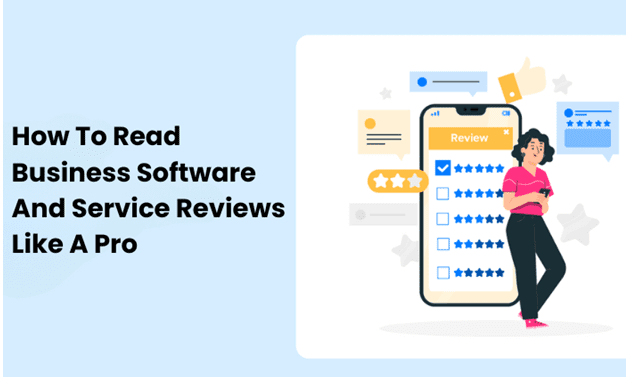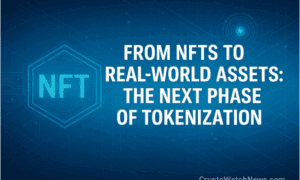Choosing the right business software can feel like stepping into a maze. Every tool claims to be the best, and every website highlights its strengths. But how do you separate genuine insights from marketing noise? The answer often lies in learning how to read business software and service reviews like a pro. Reviews can serve as roadmaps, guiding you to better decisions and helping you avoid costly mistakes.
However, not all reviews are created equal. Some are overly positive, others suspiciously negative, and a few may not even be authentic. That’s why knowing how to analyze reviews is just as important as the reviews themselves. Let’s break down how you can interpret these opinions in a way that serves your business goals—and set the stage for smarter software choices.
Why Reviews Matter More Than You Think
Reviews are more than just feedback; they’re shared experiences from people who’ve tested the software in real scenarios. When you read business software and service reviews, you’re essentially learning from someone else’s journey—their wins, struggles, and unexpected discoveries. This perspective can prevent you from repeating their mistakes while highlighting features you may not have considered.
But reviews also serve another purpose: they give context. A five-star rating might sound great, but unless you know what the reviewer valued most, the rating alone is incomplete. Was the software easy to integrate? Did customer support solve problems quickly? Or did the pricing feel fair for the features offered? These details turn reviews into valuable decision-making tools.
Before diving into how to read reviews effectively, let’s touch on the common challenges that come with them. This will help frame why interpretation skills matter so much.
The Pitfalls Of Taking Reviews At Face Value
One of the biggest mistakes businesses make is assuming every review tells the whole truth. The reality is more complicated. Some users may rate software poorly because of minor issues irrelevant to their needs. Others might exaggerate positives due to incentives for leaving reviews. This is where reading between the lines becomes essential.
When looking through Business software and service reviews, you may come across polarized opinions. Some reviewers love a tool for its simplicity, while others criticize it for lacking advanced features. Both can be true—but what matters is whether the software aligns with your goals. Recognizing these patterns is key to cutting through the noise.
Now that we’ve seen the pitfalls, let’s shift to strategies for identifying genuine, balanced insights that you can actually trust.
Spotting Genuine vs. Biased Reviews
Not all reviews are created with equal intention. Some are authentic, detailing real experiences, while others may be influenced by partnerships, rewards, or even competitors. So, how do you tell the difference?
Start by looking at detail. Genuine reviewers usually explain their use case, the size of their business, and specific benefits or challenges. Biased reviews, on the other hand, often feel vague or repetitive. For example, “Great product, works perfectly” may sound positive but tells you nothing about real performance.
Another signal is balance. Authentic reviews tend to mention both positives and areas for improvement. Even the best software has room to grow, and balanced reviews reflect that reality. Keep these signals in mind as you continue exploring business software and service reviews, because they’ll help you separate helpful feedback from noise.
Next, we’ll dive into how to compare reviews across multiple platforms to build a clearer, well-rounded picture.
Comparing Reviews Across Multiple Sources
Relying on a single website or platform can limit your perspective. That’s why it’s smart to compare reviews across multiple sources. By doing this, you’re not just relying on one community’s experiences but gathering a broader set of insights.
For example, user feedback on an independent forum might highlight integration issues, while a software directory may emphasize pricing satisfaction. Both are important, and together they create a complete picture of what to expect. When evaluating business software and service reviews, keep in mind that consistency across platforms often signals credibility. If you see recurring praises—or recurring complaints—it’s likely those points are genuine.
Once you have this broader picture, the next step is tailoring what you’ve learned to your own business needs. After all, not every glowing or critical review will apply directly to your situation.
Matching Reviews To Your Business Context
One of the most overlooked steps in analyzing reviews is aligning them with your specific context. A small startup and a large enterprise may view the same tool very differently. What frustrates one group might not matter at all to another.
When reading business software and service reviews, ask yourself: Does this reviewer’s situation resemble mine? Are they in a similar industry, company size, or budget range? If yes, their insights carry more weight for your decision. If not, take the review with caution.
This step ensures you’re not swayed by irrelevant opinions. Instead, you’re filtering reviews through the lens of what matters most to your business. That naturally leads to our next step: how to use these reviews to build a decision framework.
Turning Reviews Into A Decision Framework
By now, you’ve gathered insights from multiple platforms and aligned them with your business context. The final step is organizing these insights into a framework that helps guide your decision.
Start by grouping feedback into categories: pricing, usability, support, integrations, and scalability. This makes it easier to compare tools side by side. For example, you might notice that one software consistently scores well on customer support but struggles with customization. Another might be praised for scalability but criticized for its pricing model.
When analyzed this way, business software and service reviews become more than opinions; they transform into data points for structured decision-making. This approach also reduces the chance of overlooking important details hidden within long comment threads.
Of course, knowing where to find reliable reviews matters just as much as knowing how to interpret them.
Where to Find Reliable Reviews
Not every website gives you the same quality of insights. Some platforms are filled with promotional content, while others host communities where professionals share real, detailed experiences. This is why choosing the right source is crucial.
Platforms like SaasTrac provide a valuable collection of tools and reviews, helping businesses compare features, pricing, and performance without getting lost in biased commentary. By using such trusted platforms, you can ensure the reviews you read are more likely to reflect real-world experiences.
Now that you know where to look, the final step is learning how to act on this knowledge without falling into common traps.
Avoiding Common Review Missteps
Even with the best intentions, it’s easy to misuse reviews. Some businesses rely too heavily on star ratings, while others cherry-pick comments that support their pre-decided choice. Both approaches lead to disappointment later.
Instead, treat business software and service reviews as part of a bigger decision-making puzzle. They provide perspective, but your final choice should also consider demos, free trials, and internal feedback from your team. Reviews guide you, but testing the software in your real workflow is what seals the decision.
By avoiding these common missteps, you’ll use reviews as powerful allies rather than misleading signals. Let’s wrap up with the bigger picture of why review-reading skills are so valuable.
Conclusion
Learning how to read Business software and service reviews like a pro isn’t just about spotting the best software; it’s about avoiding costly mistakes, saving time, and aligning tools with your goals. By understanding pitfalls, identifying genuine insights, comparing across platforms, and tailoring reviews to your context, you gain control over the buying process.
With these skills, reviews evolve from scattered opinions into a structured playbook for smarter decisions. They empower you to filter noise, focus on what matters, and choose software that delivers long-term value. And in a world where the wrong choice can drain budgets and stall growth, that skill is nothing short of essential.



































